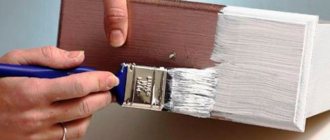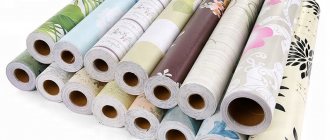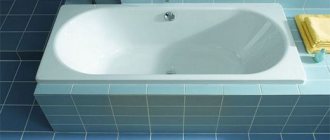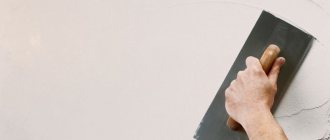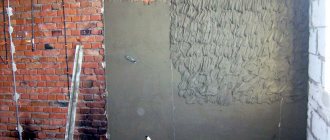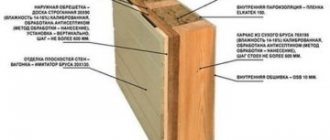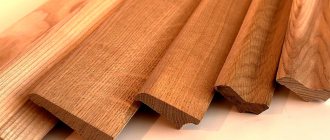Home / Care
Back
Published: 04/15/2020
Reading time: 6 min
0
6
- 1 What is defatting
- 2 What impairs adhesion
- 3 Abrasive surface treatment for bonding
- 4 Ionization preparation of bonded surfaces
- 5 How to check the quality of metal degreasing
- 6 What products can be used at home
- 7 Selection criteria
- 8 Buy a metal degreasing agent
- 9 Mechanical treatment of surfaces before gluing
- 10 Degreasing surfaces before gluing
- 11 Organic solvents
- 12 Use of primers for preparing bonded surfaces
- 13 Surface testing by wettability test
- 14 Etching surfaces before gluing
- 15 Types of pollution
- 16 Ultrasonic and electrochemical degreasing method
- 17 How can you degrease the surface before gluing rubber?
- 18 Emulsion products
- 19 Surface cleaning steps
- 20 Conclusion
What is defatting
The degreasing process involves removing fatty substances from the surface of the substrate, which may be contained in polishing compounds, preservative lubricants, mineral oils, and cooling emulsions. In addition, fingerprints and sweat, residues from washing and etching also need to be degreased.
According to the degree of surface contamination, depending on the amount of fatty impurities per square meter, they are distinguished:
- Weak – up to 1g;
- Medium – from 1 to 5g;
- Increased – more than 5g.
The chemical effect on fats consists of the following processes:
- Solvents;
- Emulsifying;
- Saponifying (destructive);
According to the ability of fats to be destroyed using degreasing agents:
- Saponifiable (fingerprints and skin marks, polishing materials, lubricant residues);
- Non-destructible (preservation lubricants, emulsions, etc.).
Leather, wood, rubber
Such materials have a special composition - organic origin. This means that all kinds of pollutants accumulate on them. Dirt is deeply absorbed and difficult to remove. Chemicals such as acetone alone are unlikely to completely remove the contaminant.
You can clean wood efficiently in an easy way: simply remove the top layer of the part. Of course, if it is permissible.
Are used:
- Plane.
- Sandpaper.
Layers of wood are removed to the depth to which impregnation occurred. Oil stains should disappear completely.
YOU NEED TO UNDERSTAND! If a large layer of contaminated surface is removed from a wooden part, it will no longer require degreasing. Such surfaces will be reliably glued with a suitable composition.
How to check the quality of metal degreasing
After treating the surface with a degreaser, we check the quality of the work done to ensure the result. To do this, we are guided by a method called the “wetability test”: drops of water are applied to a degreased surface and the reaction is monitored.
- If water spreads evenly over the surface of the metal, then the degreasing is high-quality;
- If drops collect in separate places, it means that it was not possible to degrease the metal at home. Additional processing is needed.
This method is not suitable for testing aluminum and magnesium surfaces.
Painted surfaces
In case of urgent need to glue painted parts from any material, their surface should be cleaned a little, making it rough for better joining. After this, the surfaces are degreased and glued together. Aggressive solvents in the form of solvents are not suitable for degreasing a painted surface, as they will simply damage the paint layer. It is best to use alcohol-containing liquids.
What products can you use at home?
Since degreasing is the process of removing organic substances from metal and other surfaces, it is worth approaching this issue very carefully. Metal surfaces are almost always covered with an invisible film of various oils and paints. Oxides appear on non-ferrous metals, and rust on ferrous metals.
At home, toxic substances cannot be used for degreasing; there are no conditions for electrochemical degreasing. Therefore, let’s turn to organic solvents that are familiar to everyone.
- Before degreasing metal at home, you need to clean its surface from ordinary debris, dirt and rust. Unfortunately, not all methods are available at home, such as sandblasting metal cleaning. All this is done using manual mechanical devices - sandpaper, metal brush, grinder, electric drill. If there are no substances between the paint and metal layers, excellent adhesion will be achieved. Used for preliminary cleaning of metal and detergents. But ferrous metals do not really like moisture; it provokes the appearance of new layers of rust.
- An organic solvent (gasoline, solvent, solvent 646, etc.) is applied to the metal surface. When starting to work with solvents, you must apply a special protective paste to your hands, wear safety glasses, gloves and a respirator. You must be very careful with flammable solvents. They can well be replaced by non-flammable solvents - freons, fluorinated and chlorinated hydrocarbons. In a closed room, metal processing should be carried out only with good ventilation. You need to take a regular rag soaked in solvent in your hands and rub the metal surface until traces of oil or other contaminants appear on the rag.
- Small parts with protrusions and gaps are very convenient to clean and degrease if completely immersed in solvent and left for a while. Then take it out, clean it with a hard sponge, rinse under pressure of water, and wipe dry.
- To avoid mistakes and effectively degrease metal at home, you should use a special universal degreaser. The substance contains surfactants and electrolytes, such as caustic soda, soda ash, sodium silicates, phosphoric acid salts, boric acid salts, etc. Therefore, you won’t have to rub the surface for a long time, and all contaminants will definitely disappear, ensuring adhesion to the new metal coating.
We invite you to familiarize yourself with Beijing cabbage - cultivation and care in open ground and greenhouses
Degreasing metal parts
Most often, the answer to the question of how to degrease the surface before gluing metal parts is a common solvent, gasoline or acetone. To do this, the liquid is applied to a rag, which is then used to thoroughly wipe the entire area. It is best to work in protective clothing and a respirator, since caustic liquids can burn the skin or cause an allergic reaction. You can also degrease metal with regular vodka or white spirit. When processing small parts, it is recommended to completely immerse them in liquid for a few minutes.
Criterias of choice
It is very important not to make a mistake in choosing a product suitable for a particular job. This is especially true for car painting work. Some components may be incompatible with each other, then manufacturers indicate on the packaging what exactly is suitable for a particular product. If you make the wrong choice, you can damage the surface being treated. Incorrectly selected tools may simply not cope with the assigned tasks.
When choosing a solution for degreasing a car body, you need to consider the following nuances:
- the ability to dissolve those substances that contain fat;
- degree of adhesion to putty, primer or enamel;
- aggressiveness towards metal.
Plastic
The maximum number of problems arise with this material: they can dissolve along with the fats being removed. So the question of how to degrease a plastic surface before painting is the most difficult to solve. For such cases, experts suggest using mild and neutral reagents, for example, PiTon in aerosols. As an alternative, special removers (APP W900, APP WK900) and anti-silicone are good. The most common question asked by modellers is how to degrease before painting. They can find more information in the article.
Buy metal degreasing agent
Anyone can purchase a metal degreasing product at home. The price and method of using the special product are available to everyone. All problems with degreasing metal products and surfaces will be solved successfully and quickly!
Preliminary preparation of surfaces is one of the necessary conditions for obtaining the best gluing results. Bonding strength largely depends on the adhesion between the adhesive and the surfaces being joined. The more thorough and complete the preliminary cleaning of the working surface is, the greater the strength of adhesive joints (Fig. 19).
Adhesion is enhanced:
- when removing unwanted surface films after mechanical cleaning or degreasing;
- when creating new active surfaces as a result of applying primers;
- when surface activity changes after plasma treatment of metal, corona treatment, etching of metal surfaces and similar operations.
If the bonded surfaces are dirty, adhesion decreases.
Wood products
Wooden products must be cleaned of varnish and paint before painting. At the first stage, you need to clean the wood as thoroughly as possible with a wire brush, sandpaper, or a plane. The latter is used to remove the top layer if the paint is deeply ingrained - with high-quality work, you don’t even need to degrease the surface.
For wood, special products and universal solvents are used; they are applied with a roller. There is no point in using gasoline. After applying the composition, you can easily clean the surface and then proceed to painting.
Mechanical treatment of surfaces before gluing
Contaminated metal surfaces often contain oxides that cannot be removed by degreasing. Here it is necessary to carry out preliminary mechanical treatment: wire brushing, grinding or sandblasting.
Sandblasting is good for cleaning large surfaces. The surface roughness achieved in this way has a positive effect on the quality of gluing if the sand used is not very coarse. Sanding also creates a good surface roughness. With this method, it is very important to use a suitable roughness grain (for aluminum, for example, 300-600, for steel - 100).
At the end of sandblasting, as well as after brushing or grinding, the parts must be degreased in order to completely remove processing residues. Before machining, it is also necessary to degrease heavily soiled parts. This is done so that the abrasive or sand used does not leave behind solid particles on the surface. As practice shows,
The mechanical pre-treatments used to create adequate bond strength are readily available and very simple.
When gluing plastic or rubber parts, all contaminants in the form of surface films, mold deposits and vulcanization films must also be removed first. Abrasives made from aluminum oxide or cast iron balls are effective for processing plastic parts. Rubber surfaces can be cleaned by sanding or solvents.
Sandblasting
After the surfaces have been cleaned before gluing, they are washed in clean water to remove small particles, dried thoroughly and degreasing begins.
How to degrease the surface before gluing? Typically used for this:
The main thing is to remember that even if there are no visible grease or oil stains on the surfaces, it is necessary to carry out the degreasing procedure. This is necessary to improve adhesion and joint quality.
Degreasing surfaces before gluing
To get the best results, you should completely remove oil, grease, dust and other dirt residues from the surfaces to be bonded. Solvents that evaporate without leaving residue can be used for this purpose. The table lists the main solvents and their cleaning properties.
We suggest you familiarize yourself with How to plant petunia seedlings correctly
Alkaline and acidic water systems almost always contain corrosion inhibitors. Their residues on the cleaned bonding surface can reduce adhesion or slow down the polymerization process of the adhesive. Before using such cleaners, preliminary tests should be carried out. In each case, the surfaces must be completely rinsed and dried.
Cleaning solution: Dependence of final strength of adhesives on concentration
Cleaning solution: Dependence of the final strength of adhesives on the drying position (horizontal or vertical).
When using special degreasing baths on large production lines, heavily soiled surfaces should be pre-cleaned to avoid contamination of the baths. Vaporizing cleaners are often used. When using them, the solution is heated to boiling temperature and evaporates.
As a rule, pre-treating surfaces with fast-acting cleaners is sufficient. With their help, oil, grease, and dirt residues are removed, thereby preparing the surface for gluing. If cleaning with solvents is carried out in addition to the process of chemical degreasing, a good result in removing dirt from the surface is achieved by using mechanical treatment with brushes and wiping cloths.
Metal
If you need to paint any product with a metal surface, then initially you will need to do all the preparatory work, including degreasing the metal surface before painting. But first of all, it is necessary to free the surface from various burrs, dirt and rust. What solutions can be used in the surface degreasing procedure is not an urgent question today, because there is a large selection of similar products in stores. For all of the above operations, you can use solvent 646, solvent, xylene or regular gasoline.
Those who decided to save a little and began to use water or aqueous solutions with the addition of synthetic detergents, then after drying the metal surface, you will find rust stains appearing on it. Therefore, an organic solvent is better suited for these purposes. The fabric used should be free of lint. The most acceptable option for choosing fabric is simple white chintz. Wipe the metal surface with a dampened piece of cloth until dark traces of dirt no longer appear on the cloth.
Only in this case the prepared area of metal becomes shiny and smooth. Having finished degreasing the surface, after waiting an hour for the surface to dry, you can safely begin priming and painting the metal surface. The ideal solution for degreasing metal surfaces is technical or medical alcohol, but the cost of such work will be very high. This solution can be used if the selected metal surface has a small area.
It should be remembered that using high-octane gasoline as a solvent will not achieve the best result due to remaining particles on the surface of some gasoline ingredients.
The most popular metal surface cleaner is solvent 646, which is actually dry. When carrying out cleaning work with this product, you will need to install a sprayer on the container. Have personal protection in the form of work overalls, safety glasses and a personal respirator. Smoking is prohibited during such work. There should not be a hot object or open fire nearby.
To get rid of rust on a metal surface, it is better to use an ordinary grinding machine, thereby mechanizing your work process.
Organic solvents
Using organic solvents, you can clean oily and greasy areas of metal parts in a short period of time. They are more often used in individual production, less often in serial production (due to explosion and fire hazards). When exposed to organic solvents, oil and fat deposits dissolve.
The quality of work directly depends on the degree of contamination of the solvent, since the ability to dissolve sharply deteriorates with a fat content of 5 g per 1 liter. The most common are aliphatic (gasoline, white spirit) and chlorinated (non-flammable, but more toxic) solvents. Among the shortcomings, one can note the lack of cleaning of surfaces from abrasive materials and other mineral contaminants.
Remedies before gluing
The choice of degreaser for the materials being bonded will depend on what materials are being used. This can be ordinary household chemicals, alkali, alcohol, or organic solvent. For rubber, isopropyl alcohol is suitable. The main thing is not to apply products to wet surfaces - upon contact with water, many substances give an unpredictable reaction or become ineffective.
There is nothing complicated in degreasing and subsequent gluing and painting of products. It is important to familiarize yourself with the necessary information, purchase a suitable solvent - then all work will be completed efficiently and without consequences.
After degreasing is completed, you need to drop a couple of drops of water onto the surface: if the liquid becomes flat and spreads, the cleaning is done perfectly.
Using primers to prepare bonded surfaces
Primers typically contain reactive, soluble chemical compounds. They are applied with a brush or sprayed onto the surface of the material. Solvent particles remaining after treatment can be neutralized. When certain types of primers are used, the surface can be ready for bonding immediately, as is the case with polyolefin primers in cyanoacrylates.
Thanks to surface primers, surface adhesion improves. They act like a chemical bridge between the adhesive and the surface. In a primer, the reactive moiety is usually multifunctional with respect to a specific set of reactive groups that react with the working surface as well as with additional adhesive-like groups.
x = additional or alternative method
xxx = most suitable method
Working with inorganic surfaces
How to degrease the surface before gluing ceramic tiles?
Any inorganic materials are less demanding in terms of the choice of liquid for processing, including:
They must be prepared for gluing according to the standard procedure: first thoroughly clean the surfaces of the parts from dirt, and then thoroughly degrease them. For the latter, you can use acetone, solvents, alcohol and any other suitable liquids. It is very important to thoroughly dry ceramic and concrete parts after each stage, since they are characterized by high moisture retention within themselves. It is better to degrease concrete with a perchlorethylene solution.
Surface testing by wettability test
The quality of the preparedness of the surface for gluing can be determined using a fairly simple method of repelling liquid. Drops of clean water are applied to the cleaned surface. If the surface is not sufficiently cleaned, the spherical shape of the drop remains, therefore, this surface must be cleaned again. On a sufficiently clean bonding surface, water spreads.
The liquid repelling method cannot be used on anodized magnesium and aluminum surfaces.
The main advantage of the water repellency test method is its ease of availability.
In addition, the use of this method is not always acceptable due to different water hardnesses, which create different surface tensions. Even the use of distilled water during water repellency tests sometimes does not provide reliable results. Therefore, for special cases it is necessary to use surface-stressed liquids, which have a precisely defined surface tension.
Surface preparation can be checked using the "water repelling" method.
The technology of connecting various materials by gluing is one of the most popular due to its relative availability and simplicity. Following a few simple rules allows you to successfully use this method both on an industrial scale and at home. The main stage, which largely determines the final result, is the careful preparation of the surfaces intended for gluing.
We invite you to familiarize yourself with Planting Roses in the Fall :: Encyclopedia of Roses
Cleaning methods
If we try to organize all the known, practiced methods of cleaning and preparing surfaces for gluing, we will get three main groups:
- mechanical cleaning;
- degreasing;
- cleaning using various chemical compounds (organic and inorganic).
Mechanical or abrasive processing
surfaces intended for gluing is considered the simplest, but it is not always justified. For example, it is really advantageous to clean ferrous metals from rust and scale mechanically, but the same procedure with non-ferrous metals such as copper, aluminum, zinc significantly accelerates the oxidation process, which can only complicate subsequent adhesion.
Note! The use of a mechanical cleaning method for some units and parts manufactured with maximum adherence to exact dimensions is unacceptable!
For mechanical processing it is customary to use the following methods and tools:
- sandpaper or glass paper of different grain sizes;
- brushes with metal hair;
- grinders - household and industrial;
- sandblasting or shot blasting installations.
, Scotch brite sponges can serve as a tool for quick and easy surface preparation.
™ (sometimes called
Scotch Brite
™ wipes). They allow you to quickly carry out high-quality abrasive processing, they are easy to use, they are very durable (tens of times more durable than sandpaper), and they will protect your hands from damage (due to their thickness).
It should be taken into account that the mechanical preparation of the material, no matter how carefully it is performed, is necessarily supplemented by degreasing or chemical cleaning.
Degreasing.
Almost always used when gluing metals, plastics and ceramics. Oil, grease or emulsion films may not be visible to the eye, but with a high degree of probability they are present on any surface. It is impossible to find an adhesive composition, the use of which would exclude the degreasing procedure. For example, cyanoacrylate glue of any brand is used only after the described operation, otherwise it is difficult to expect a positive result. A traditional degreaser is a solvent, either pure or in a vapor state. In some cases, ordinary water can give an excellent result, and the higher its temperature, the better the result. It is allowed to rinse in a degreasing composition, wipe the areas intended for gluing with a cloth, and steam treatment. This method is perfect for use at home, when the gluing procedure requires speed and accuracy.
Surface degreasing
Before using
3M adhesive solutions,
it is recommended to use an aqueous solution
of isopropyl
.
Water will not allow the reactant to quickly evaporate from the surface and will increase the reaction time (breakdown) of fats with the cleaner.
You can also purchase
this degreaser If the surface is heavily soiled, we first recommend using 3M™ Citrus Cleaner
, which will quickly remove large traces of oil, glue, and remnants of old adhesive tapes.
Chemical cleaning
. Using this method in combination with mechanical surface preparation, you can achieve the highest quality results. Chemical compositions produced by modern industry make it possible to selectively and in a mode that is gentle on the materials used, prepare absolutely any surface for gluing. We separately note the procedure of etching or electrochemical cleaning. This technology allows high-quality cleaning of metal surfaces, but due to its complex organization it is used mainly in industry.
Types of pollution
When determining the method by which you plan to clean and prepare areas in an adhesive installation, you should first of all pay attention to the properties of the materials involved in the process. For example, many metals are characterized by corrosion processes, the product of which is rust. Gluing of wood can be prevented by resin or oxides that appear on open and unprotected cuts. Dust and dirt will prevent the use of even the most advanced adhesive composition, such as hot-melt adhesive.
The list of the most common contaminants for various types of materials will look like this:
- scale, rust, oxides, various oil and emulsion films - metal;
- oxidation, resin - wood;
- plasticizers, protective compounds - ceramics;
- remnants of components used for stamping - plastic;
- dirt, dust, organic matter, moisture, etc. can be present on any material.
Note that in the vast majority of cases, surface contamination is of a combined nature. The consequence of this will be the need to perform several step-by-step actions in the preparation process.
How to degrease plastic
Plastics are one of the largest groups of materials, containing a variety of types of plastic. Gasoline, acetone, and vinegar are perfect for a number of plastics; other materials will immediately become unusable from such substances. Universal compounds are also not always suitable for plastic.
For plastic car parts, only special products are used, which are sold in relevant stores and are suitable for plastic and rubber. At home, you can try applying white spirit to the material. An antistatic agent will be 100% safe; most products can be degreased well with vodka.
The procedure for degreasing plastic before gluing it is as follows:
- Wipe off the dust with a (dry) cloth, if necessary, wash to remove obvious dirt, and dry.
- Soak a rag with solvent.
- Gently scrub the surface.
- If in doubt, try scrubbing a small area of the product first.
Ultrasonic and electrochemical degreasing method
To improve the cleaning properties of detergent compositions, special baths with an ultrasonic field are used. This method is used for small-volume products that have a surface of increased complexity and require ideal surface cleaning quality (parts of watches, devices, tools). For large parts, this method is unjustified from an economic point of view due to increased input power requirements.
Electrochemical degreasing also occurs in specially equipped baths, where gas bubbles formed on the electrodes play an active role. This reduces the consumption of chemical components and improves the quality of cleaning.
Metal
When choosing what to degrease metal surfaces with before painting, you must take into account the purpose of the product itself and, accordingly, the thickness, type and grade of the metal.
- Rough metal products (railings, fences, etc.). Gasoline, white spirit, kerosene and freons are quite suitable.
- Car painting. The body is made of rather thin metal, and not iron, and the listed means can only cause harm. If special preparations are not available, you can use vinegar mixed with detergent. Or buy anti-silicones.
After the preliminary work, you can begin the main work. Some subtleties of subsequent actions are described in the article
Surface cleaning steps
Only by following the following sequence of cleaning steps is it possible to obtain the strongest possible bond:
- Cleaning from traces of oil, degreasing;
- Abrasive preparation;
- Repeated degreasing;
- Additional surface preparation using 3M™ primer (primer) – (if necessary).
To summarize, we would like to draw your attention to the need to remember the properties of a particular material when choosing a cleaning method and to observe safety precautions when working with equipment and chemicals.
Glass
Sometimes the question arises: “How to degrease glass?” For these purposes, it is allowed to use any detergents used at home for cleaning apartment windows. The proposed products will help you temporarily get rid of existing dirt on the glass and at the same time degrease them.
If you think that the glass is not in a clean condition, then use the same universal remedy - medical alcohol. There is simply no better remedy in all its guises.
degreasing before repair
When preparing metal products for painting or gluing, it is necessary to degrease the surface. Only after this the coating will be easy to apply and last much stronger and longer.
You can degrease metal at home using improvised means, but it is better to use a special degreaser.
What can replace degreaser?
No one will argue with the statement that to achieve an ideal result you will need high-quality, preferably professional, cosmetics for degreasing nails. But if you don’t have them on hand, what can you use instead of degreaser for gel polish?
- The most popular and most affordable way to degrease nails is with ordinary nail polish remover, which contains the familiar acetone among the ingredients. Before use, carefully read the composition of the product; it should not contain oils. Otherwise, you will achieve the exact opposite effect. Do not forget that frequent use of acetone negatively affects the condition of the nail plate;
- Alcohol works well as a degreaser. It simultaneously disinfects and removes makeup residue from nails. However, with regular use it dries out the nail plates greatly. Pure medical alcohol is not so easy to get, so a solution of boric acid, which can be purchased at any pharmacy, is suitable;
- Specialists in beauty salons often resort to using a product such as “Bacillol”; it has good reviews from both ordinary users and professionals. Suitable for processing not only nails, but also tools.
Boric acid solution
However, no matter how effective and good all of the above products are, they cannot compare with professional cosmetics. Therefore, their use should be resorted to in the most extreme cases.
Judging by consumer reviews, products from manufacturers such as Domix and Severina are in greatest demand. They supply the degreaser in small bottles, but it lasts for a long time.
Dish detergent
How to properly use nail degreaser?
High-quality “dead” adhesion between the nail and the decorative coating is ensured by thorough preparation in several stages. All types of degreasers used must be used correctly, following the following sequence:
- Neil prep (i.e. degreaser) . This is the first step to the perfect manicure. Before use, you need to remove the shine of the nail with a buff. Degrease the surface of the nail with the product. It can be applied directly to the nail and then wiped off with a lint-free cloth. You can soak a napkin with liquid and treat your nails with it.
- Dehydrator . The composition is not always applied. In cases of high sweating on the fingers, you cannot do without it. It is also necessary for the subsequent application of acid-free primer. Acidic does not require treatment of the nail with a dehydrator. The product is applied with a brush, then wiping the nail with a special napkin.
- Primer . Cover the nail with this product very carefully so as not to capture the periungual ridges (regardless of whether it is acidic or not). This should be done with a brush; there is no need to wipe it off.
